Because of its rich patterns and colors, stained glass always creates stunning effects, whether indoors or outdoors. As sunlight filters through polychromatic glass, colour shades can grow and shrink as colors overlap, creating impressive patterns and halos. The resulting manmade rainbow can reshape and transform the space filling hearts with joy and fostering creativity.
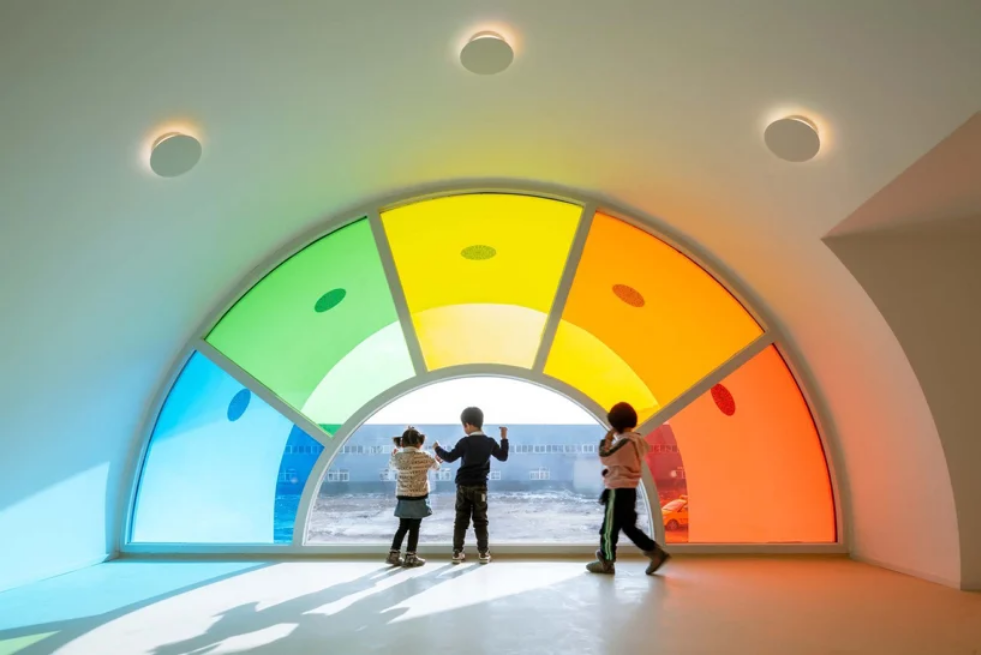
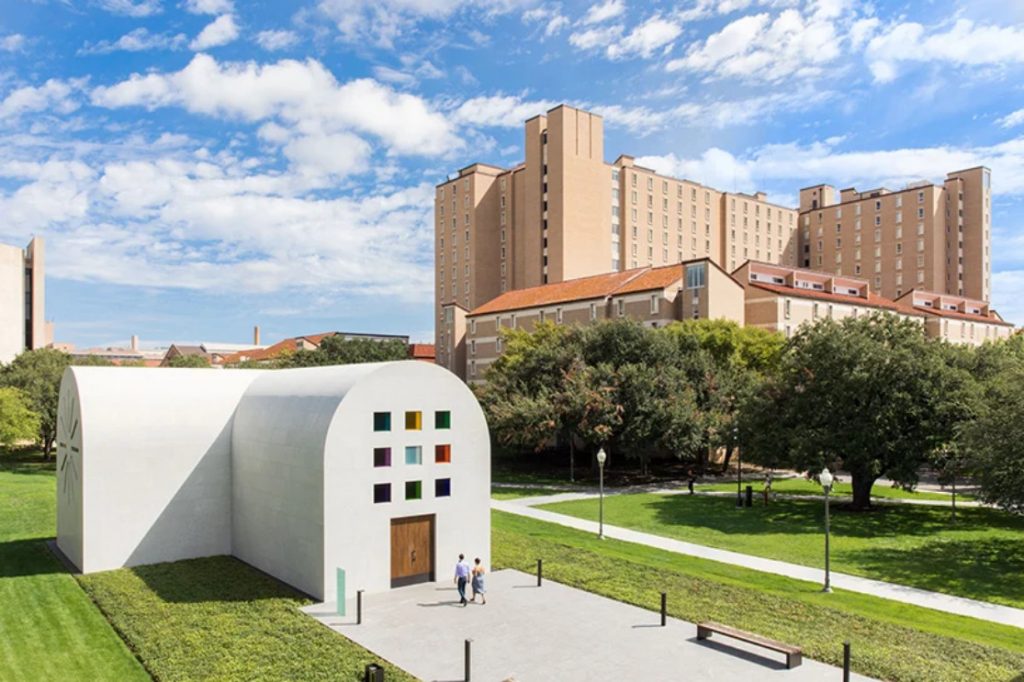
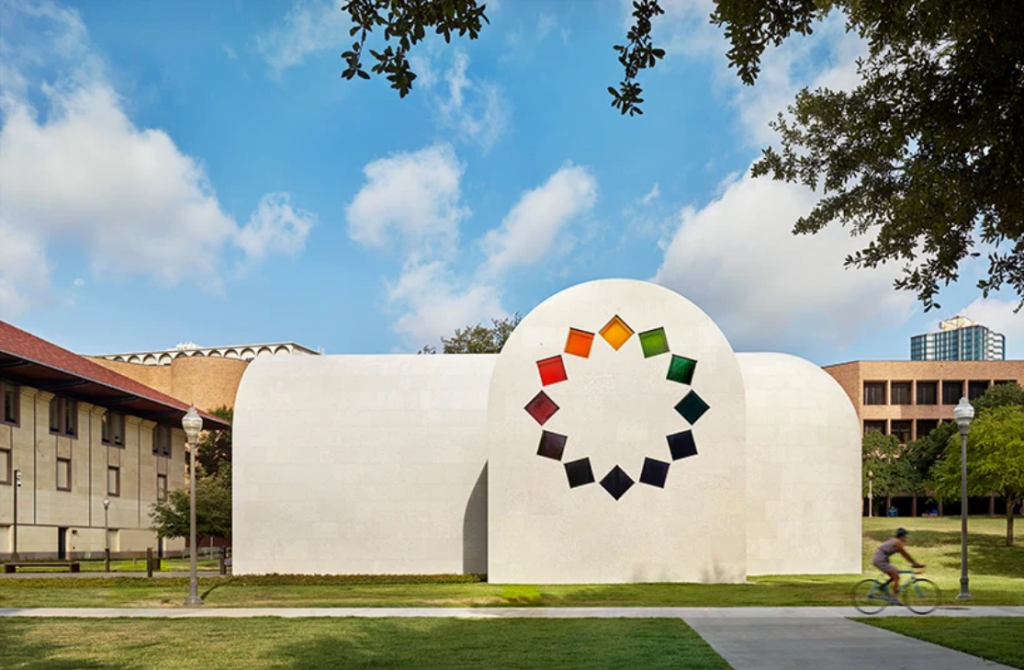
Austin by Ellsworth Kelly
It is impossible to start a conversation about rainbow-coloured stained glass in architecture without mentioning Austin, the building and work of art by the late acclaimed American artist Ellsworth Kelly. The structure is the only building Kelly, who was a master of geometry and color, designed before his death in 2015 at age 92. Envisioned by the artist as a site for joy and contemplation, the design concept for this monumental work was gifted by the artist to the Blanton Museum of Art at the University of Texas at Austin.
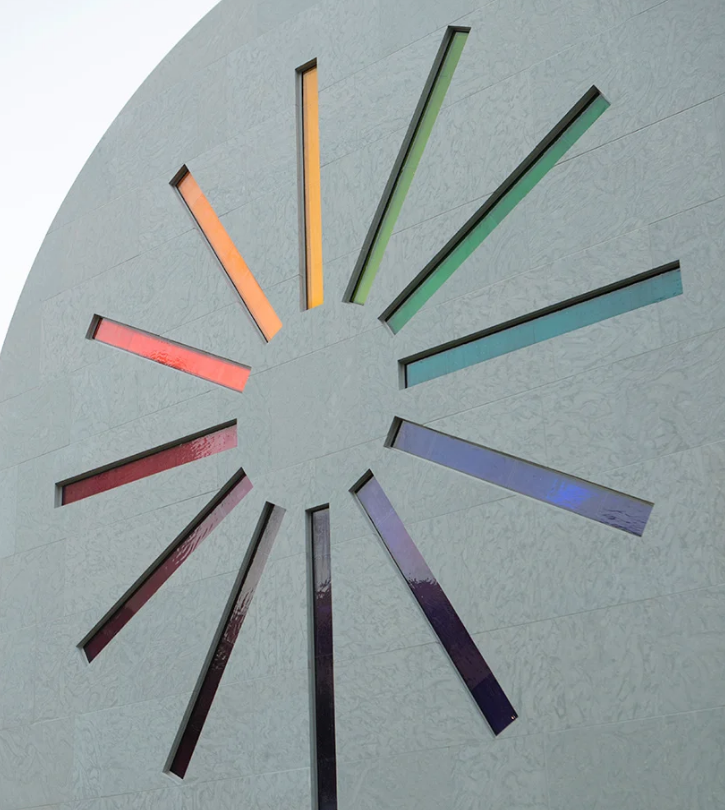

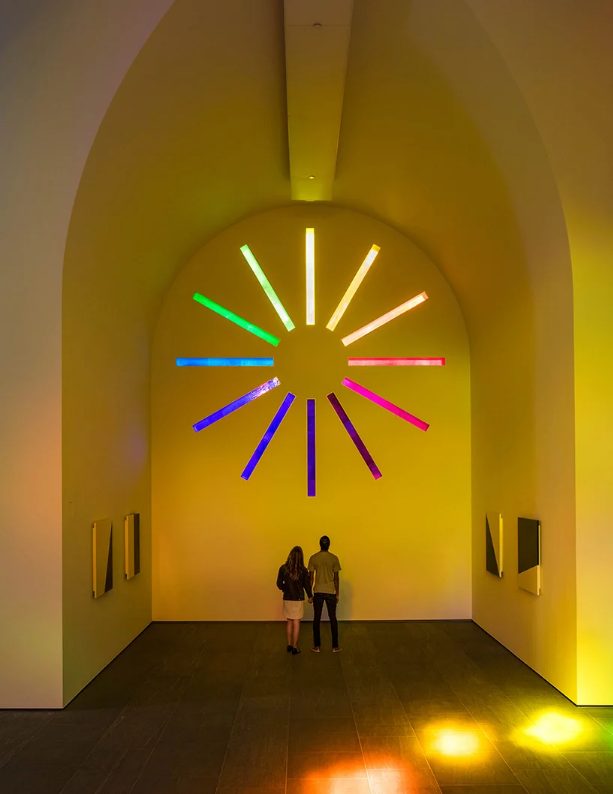
Austin by Ellsworth Kelly
First designed in the mid-eighties, Austin is a chapel in form but not in function. The artist set specific requirements for the building. It would be considered a work of art, not a religious building, it had to be accessible to the public, and it needed protection against future removal. Although the rainbow-bright building contains elements reminiscent of a religious sanctuary, the creator took some liberties.
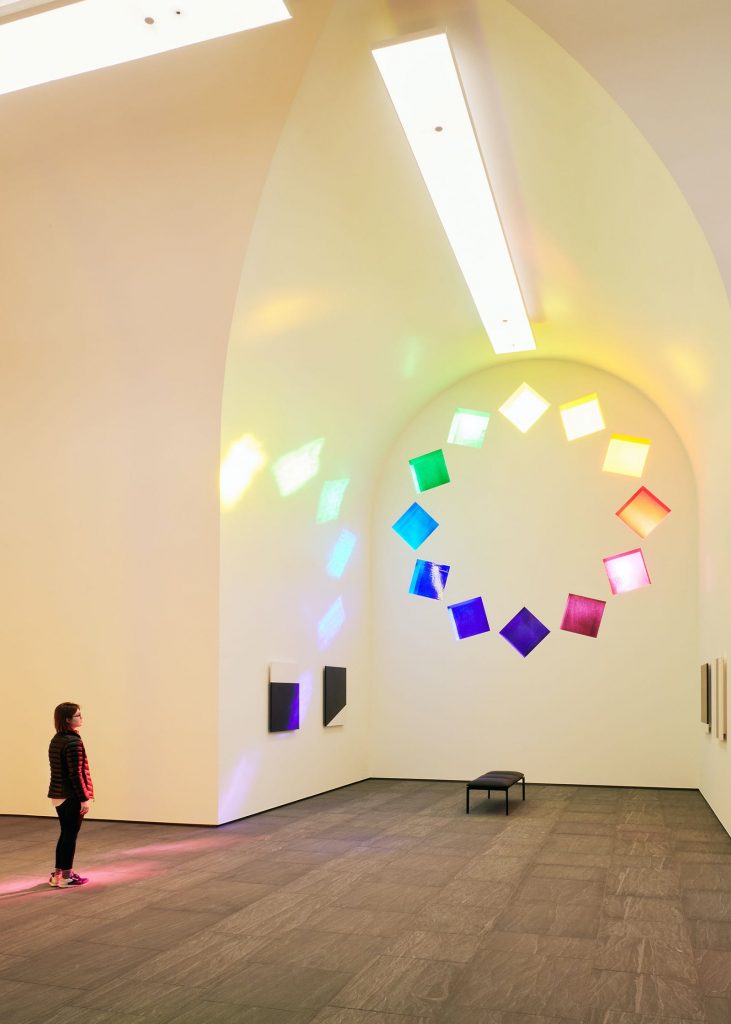
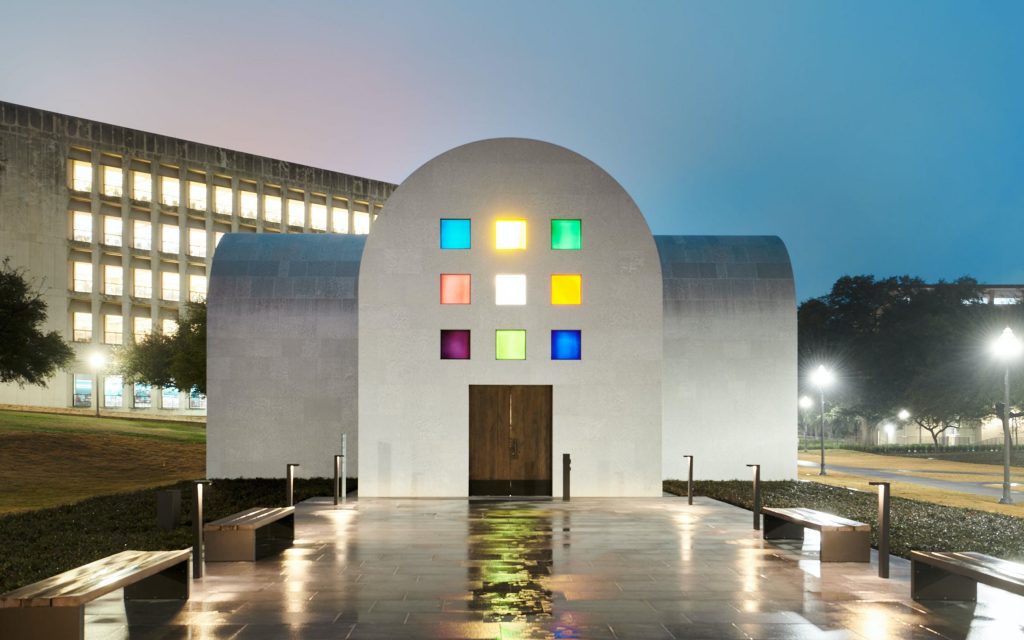
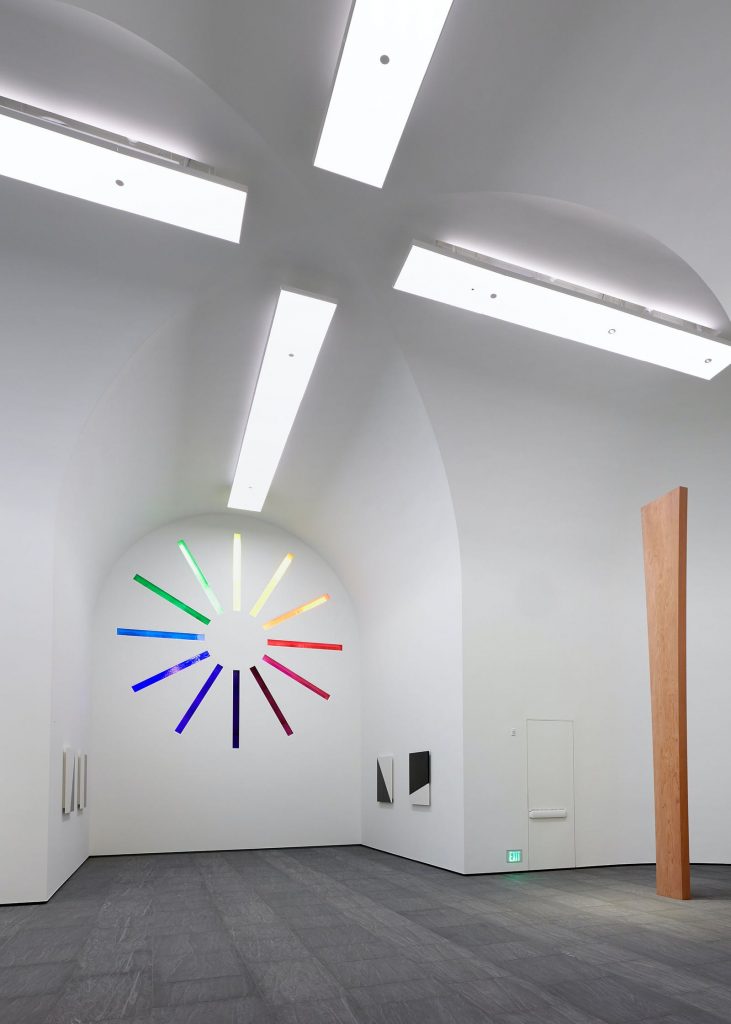
Austin by Ellsworth Kelly
The stone building features luminous stained-glass windows that splash colour across the building’s cruciform layout. The interior features a totemic wood sculpture standing stands where the altar ought to be and fourteen black and white marble panels on the walls that depict abstract interpretations of Christ’s road to Golgotha.
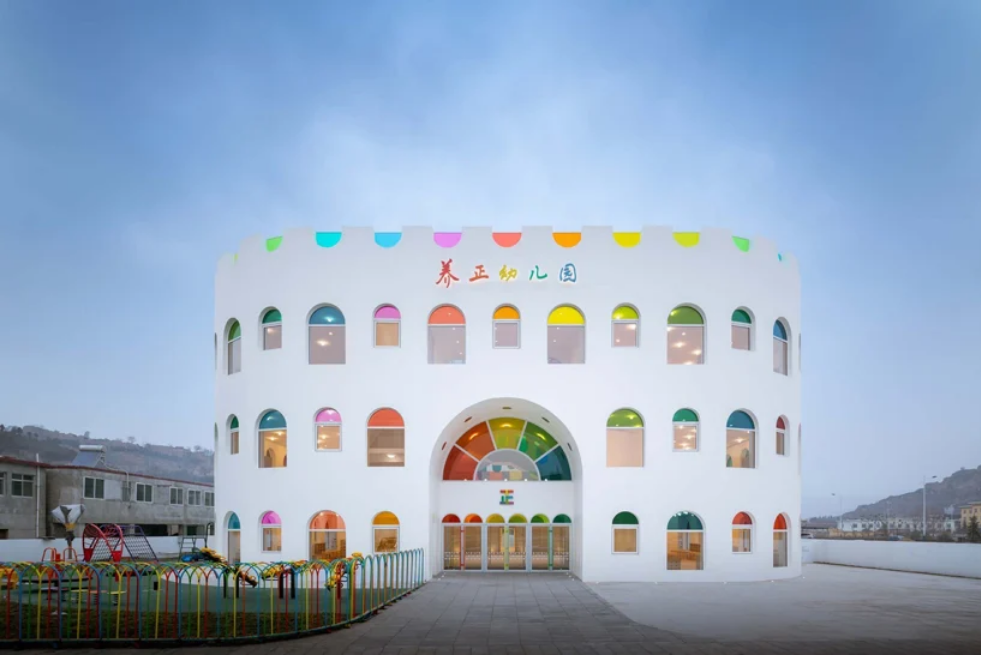
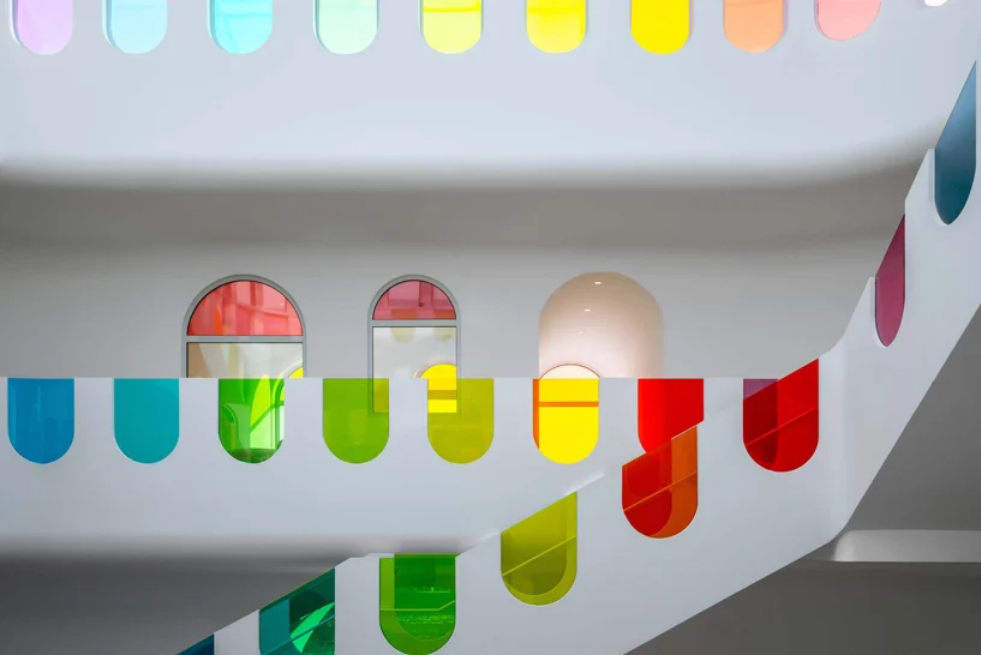
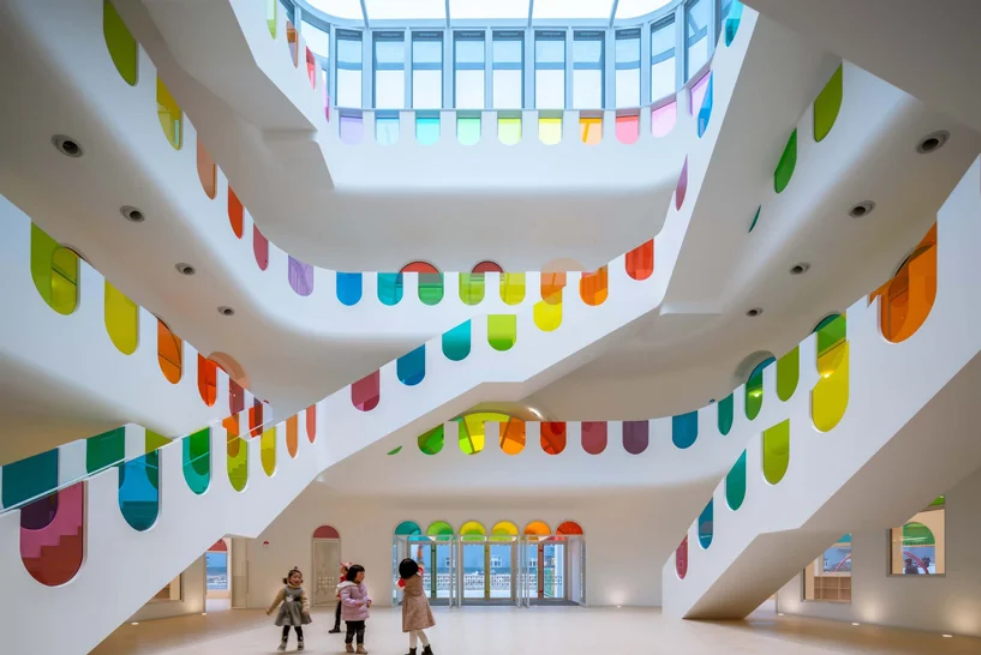
Kaleidoscope by SAKO architects (also header image)
Japanese practice SAKO architects applied colourful polychromatic glass elements to decorate a kindergarten in Tianshui, China. Aptly named Kaleidoscope, the impressive building is conceived to evoke children’s imagination and creativity with colour. During the day, natural sunlight sheds into the kindergarten’s classrooms, and the rainbow-hued elements above the glass doors and windows create a kaleidoscopic effect across the otherwise minimalist building. That is contrasted to the lighting situation at night, when the glowing lights from interior emit out of the windows.
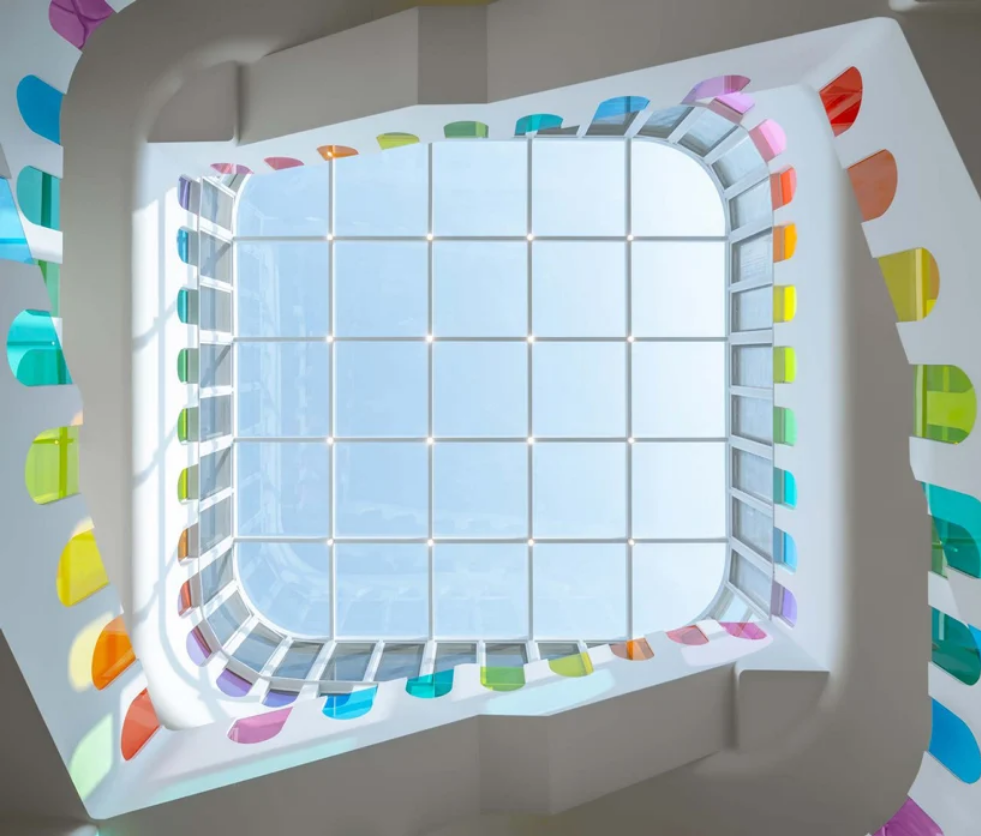
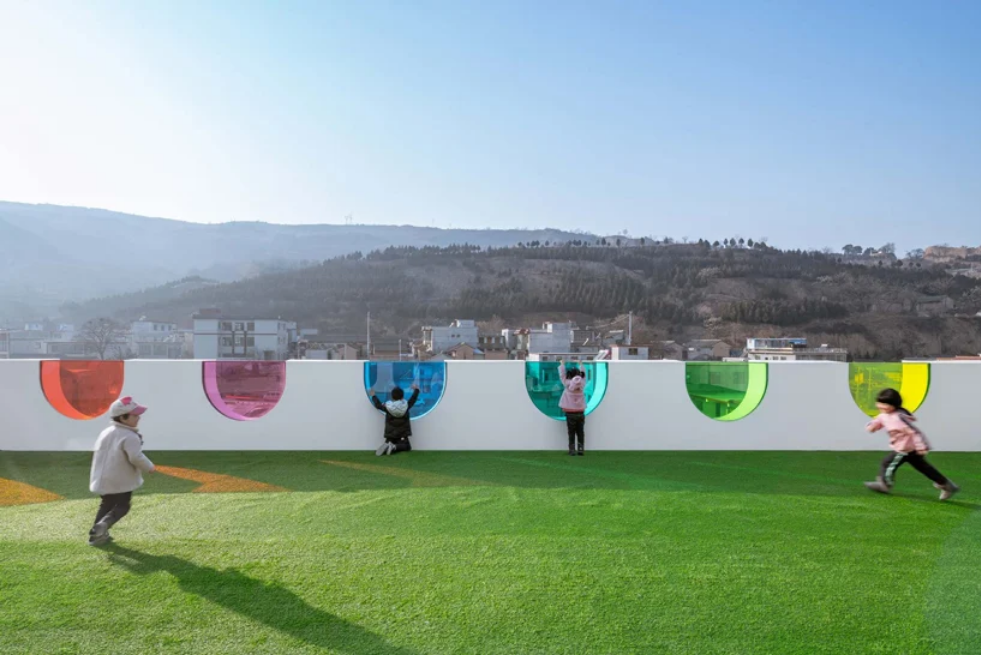
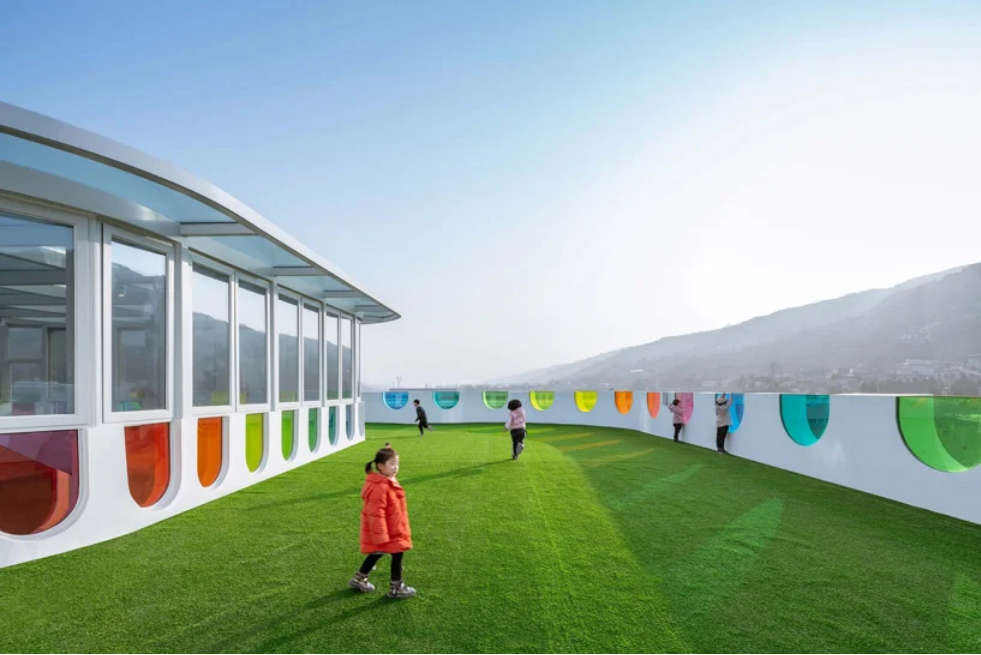
Kaleidoscope by SAKO architects
The central multi-functional atrium illuminated by a huge glass ceiling is surrounded by oval balconies, leading to classrooms. The shape is echoed by arched openings that are was inspired by the traditional cave-like dwellings found in Loess Plateau, where Tianshui city is located.

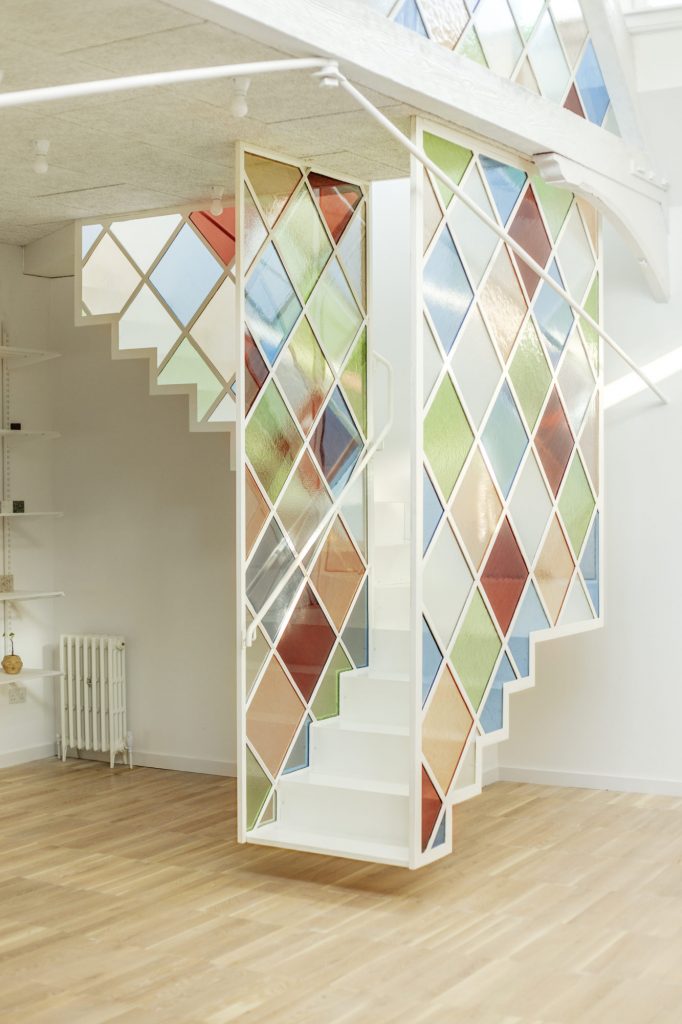
Replica House Studios by Surman Weston
British practice Surman Weston has been commissioned to turn the roof space of a former Methodist church in London’s Islington into a temporary co-working space that can later be turned into a house for the clients. The studio has implemented stained-glass screens and panels on the suspended staircase into an open-plan office to reference the building’s past as a place of worship but reimagined the conventional patterns in muted hues of green, blue, orange and red.
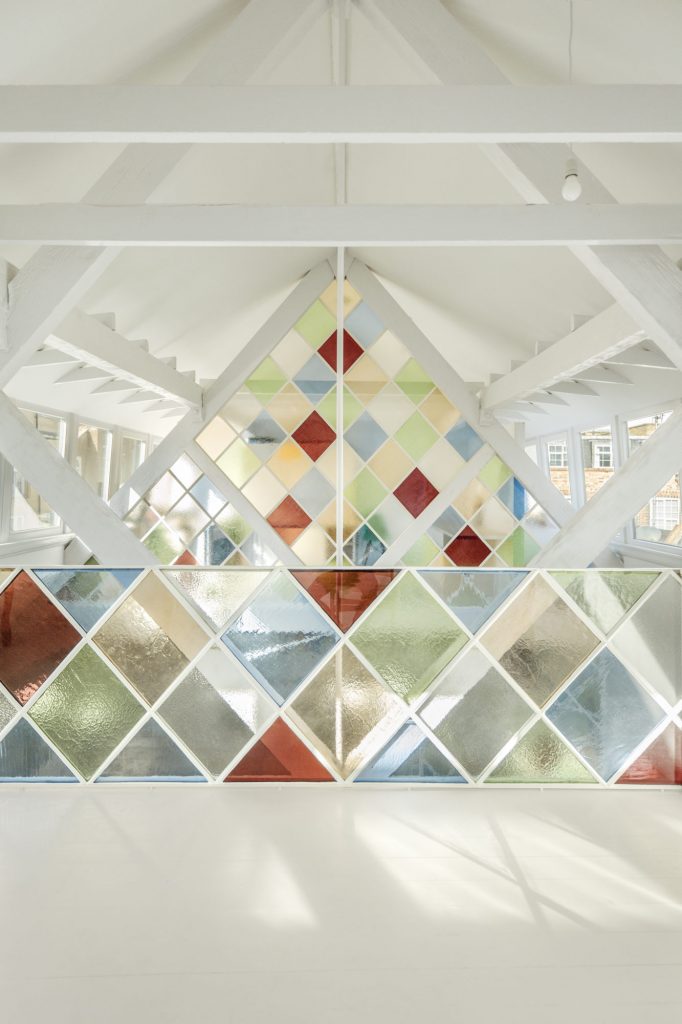


Replica House Studios by Surman Weston
The studio has conceived the interior as a canvas of textures of the original building, all in white, against which the colourful stained glass elements are offset. The glass is inserted into the gaps between the beams of the gabled roof echoing the geometry of the existing timber trusses and on either side of a white metal stairway that hangs above the floor.
Want more reading? Discover rainbow-coloured interiors here